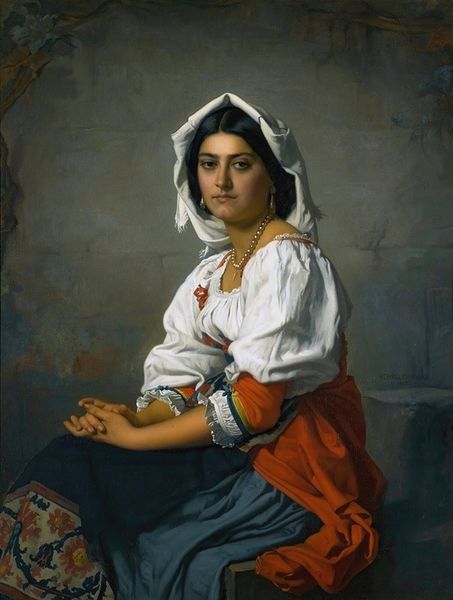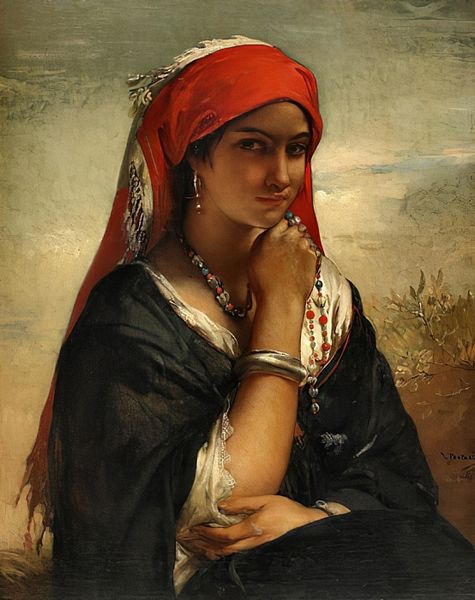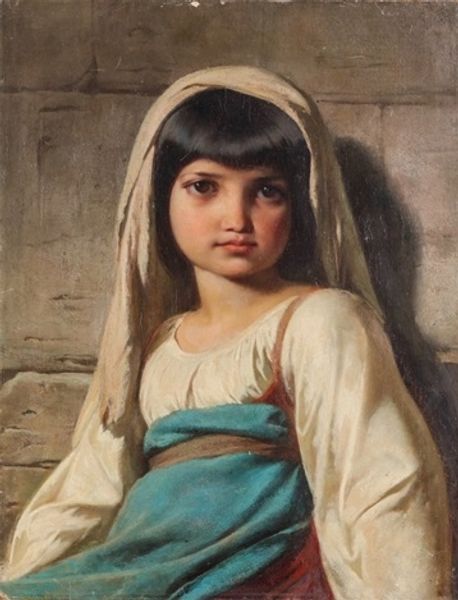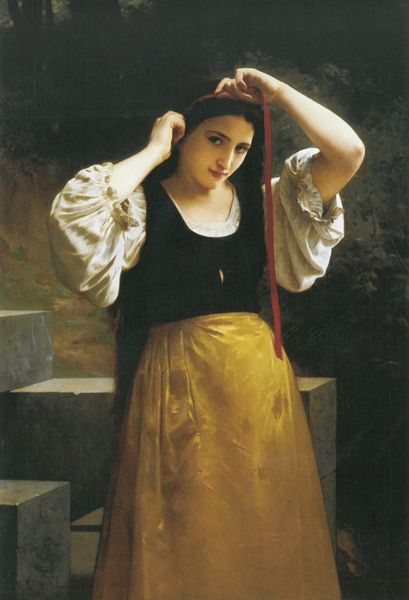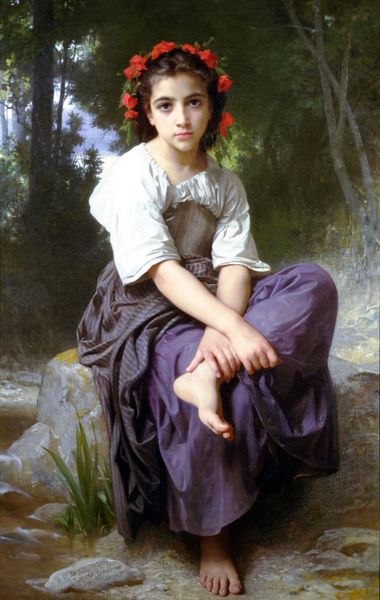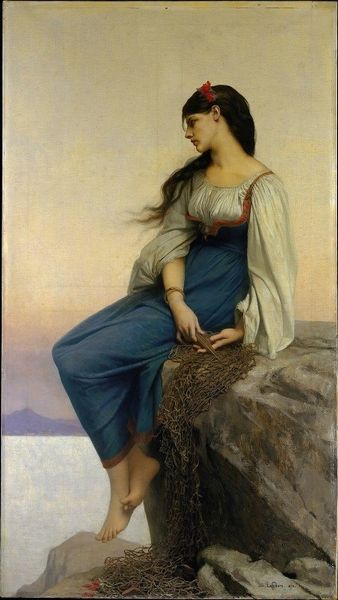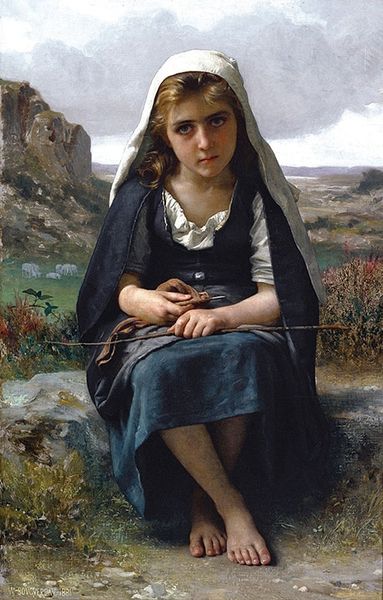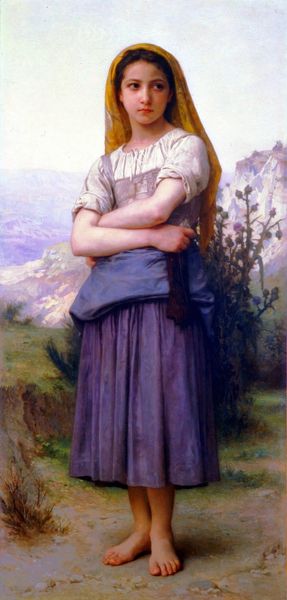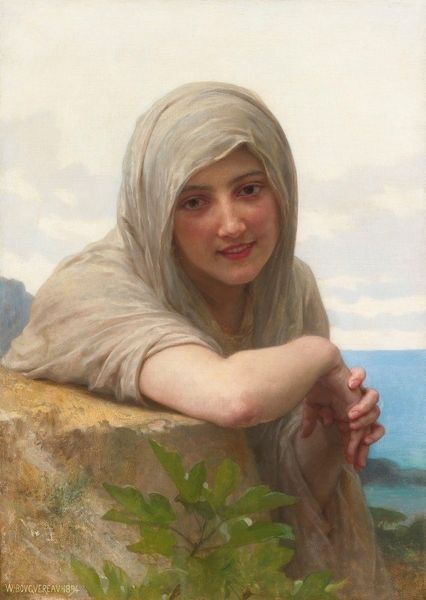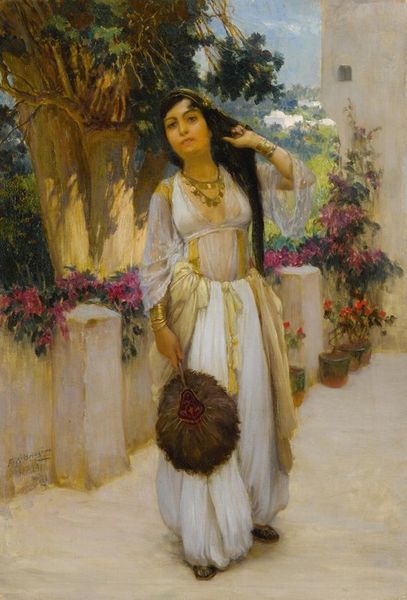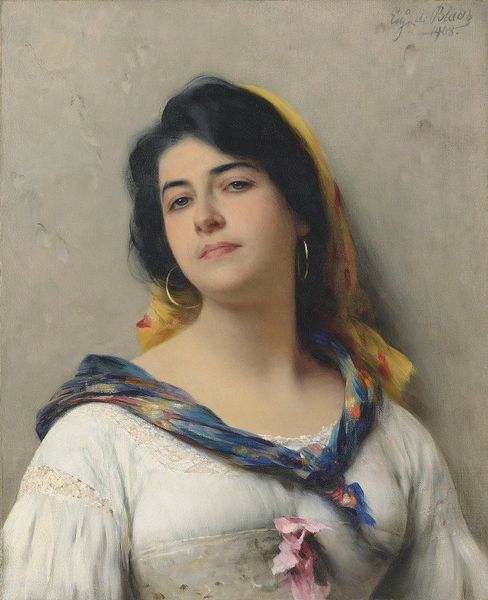
painting, oil-paint
#
portrait
#
painting
#
impressionism
#
oil-paint
#
landscape
#
realism
Dimensions: 115 x 81 cm
Copyright: Public domain
Editor: So, here we have William Bouguereau’s "The Little Knitter," painted in 1875. It’s oil on canvas, and it depicts a young girl sitting with knitting in her hands. Her expression seems...wistful, almost sad. What do you see in this piece? Curator: What I see is a carefully constructed image that perpetuates romanticized and frankly, unrealistic, views of labor, particularly that of young, working-class women in the 19th century. Bouguereau was celebrated for his idealized depictions of peasant life, which served a very specific purpose: to reinforce existing social hierarchies. Notice her bare feet, a signifier of poverty but also an eroticized detail meant for a bourgeois male gaze. Do you think her pose and gaze are natural, or contrived? Editor: Contrived, definitely. Her crossed arms and faraway look… it feels staged, almost like she's playing a part. Curator: Precisely. Consider also the complete absence of any indicators of her daily struggle. There's no dirt, no sign of wear and tear. Bouguereau was offering his wealthy patrons a vision of poverty that was palatable and non-threatening, diverting attention from the harsh realities faced by many at the time. Her beauty is central here. In what ways can beauty become a political tool? Editor: So, by presenting an idealized version of reality, the artist is actually making a political statement, reinforcing societal norms, whether consciously or not? Curator: Absolutely. He's creating an image that serves to maintain the status quo. These images offer a carefully packaged illusion designed to ease the conscience of the bourgeoisie. This beauty becomes a commodity, a visual opiate to the masses and the classes. Editor: That's… really changed my perspective on what I thought was just a pretty picture. Curator: Exactly! By questioning these representations, we start to understand art's role in shaping, and often distorting, social realities. We can admire Bouguereau’s technical skill, of course, but let's not forget to critique the ideologies embedded in his work.
Comments
No comments
Be the first to comment and join the conversation on the ultimate creative platform.

